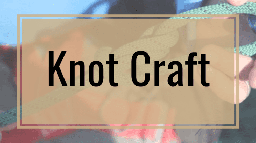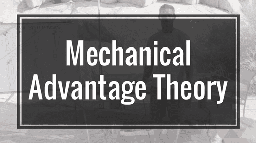This course will walk you through the most appropriate knots, bends, and hitches for the job at hand.
About the Course
Knots, bends, and hitches are defined by their function. It’s the responsibility of the rescuer to use the most appropriate knots for the job at hand. As with all systems within a vertical rescue, safety is a team issue. At least two (2) qualified team members should inspect all knots involved in the rescue operation before anyone is allowed to move into the hazard zone. What are knots, bends, and hitches? The standard definition of a knot is a rope intertwined with itself, a bend is the intertwining of two ends of rope, and a hitch is a knot that is dependent on a host object. In the true spirit of the art of knot craft, defining knots deserves a little more than “intertwined rope!”
The first thing that comes to mind when we visualize “rope intertwined with itself” is the broken body of a rock climber lying dead on top of a heap of “intertwined rope”, only because he lacked the skill in tying the appropriate knot somewhere in his system. Or as Clifford Ashley (probably history’s greatest authority on knots) put it:
“A knot… is either exactly right or it is hopelessly wrong.”
By its very nature, vertical rescue is dependent on rope, and the most elemental skill in using rope is tying it into a knot. There are no gray areas, no “in betweens” in tying knots, Mr. Ashley goes on to say “Make only one change and either an entirely different knot is made or no knot at all may result.”
This statement holds true in this business of high angle rescue, there is but only a careless visual difference between a slipped Figure Eight, and a Figure Eight on a Bight Follow Through. The Figure Eight on a Bight Follow Through is a great knot for securing a rappel harness, and under the same application, the slipped Figure Eight will drop you like a rock!
What You’ll Learn
Inside this unique Knot Craft course, we’ll explore concepts and topics such as:
Standard definitions of a knot, bend, and hitch
Best applications
Strength ratings
Why visualization of knots, bends, and hitches are critical
Why understanding elements of a knot are important
Course Curriculum
Unit 1: Welcome
1.1 Welcome
1.2 Course Material
1.3 Knot Craft Material Download
Unit 2: An Overview of Basic Knots, Bends & Hitches
2.1 An Overview of Basic Knots, Bends & Hitches
2.2 Video Tutorial: The Basics for Rope Rescue, Work Access & SAR Systems
Unit 3: Elements of Knots
3.1 Elements of Knots
3.2 The Functions and Usefulness of Rescue and Rigging Knots
3.3 Video Tutorial: Figure Eights
3.4 Bowline Knots
3.5 Video Tutorial: Hitch Knots
3.6 Video Tutorial: Basket and Redundant Basket
3.7 Video Tutorial: Frost Knot
3.8 Video Tutorial: Knot Chocks & Chockstones
Unit 4: Skill Set – Diagrams
4.1 Overhand Knot
4.2 Figure 8 Stopper Knot
4.3 Figure 8 on a Bight
4.4 Figure 8 Follow Through Knot
4.5 Double Figure 8 Loop or Bunny ears
4.5.1 Bowline on a Bight
4.5.2 Triple Loop Bowline
4.6 High Strength Bowline or Double Bowline
4.7 Interlocking Long-Tail Bowline
4.8 Inline Figure 8
4.9 Butterfly Knot or Lineman’s Knot
4.10 Figure 8 Bend Knot
4.11 Grapevine Bend or Double Fisherman’s “Knot”
4.12 Ring Bend or Water Knot
4.13 Prusik Hitch
4.14 Clove Hitch
4.15 Munter hitch or Italian hitch
4.16 Truckers Hitch
4.17 Girth Hitch or Lark’s Foot
Unit 5: Wrap Up
5.1 Wrap Up
Added Perks
Additional features Rigging Lab Academy Members are enjoying
Certificate of Completion
Download your personalized Certificate of Completion after completing the course.
100% Self-Paced
Go through the course material as fast or as slow as you’d like.
Private Discussion Board
Ask questions, meet other students, and even chat with the course instructor.





